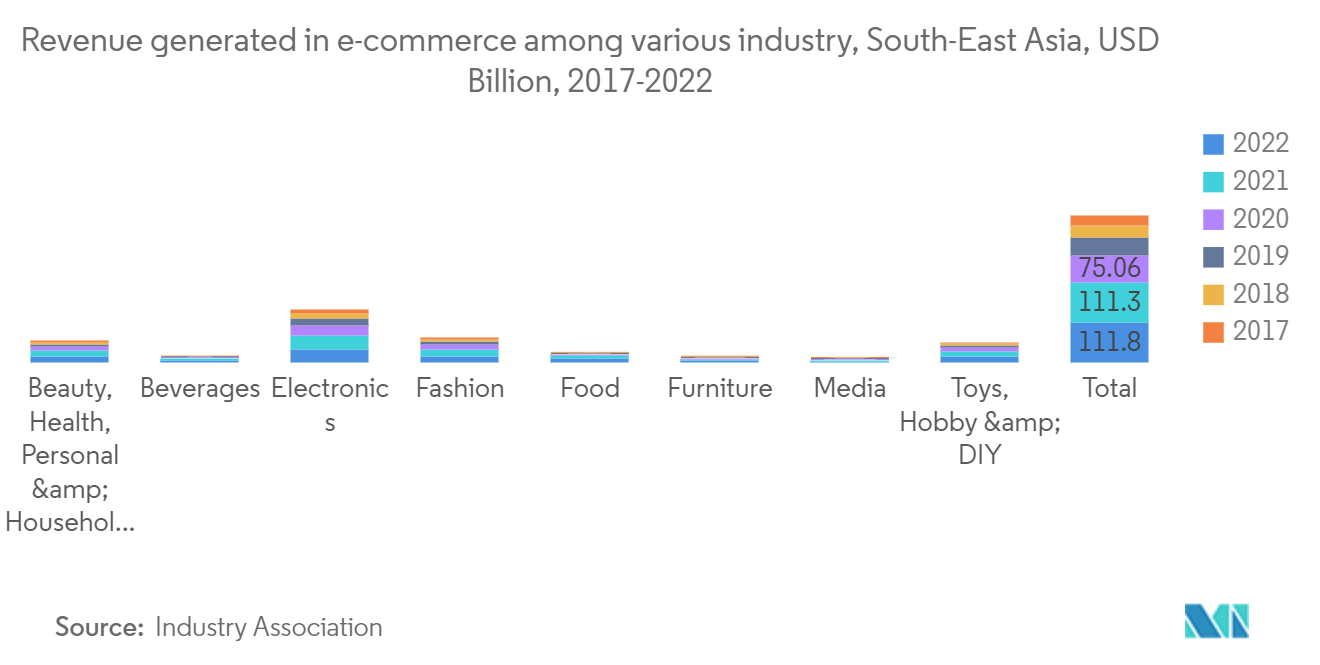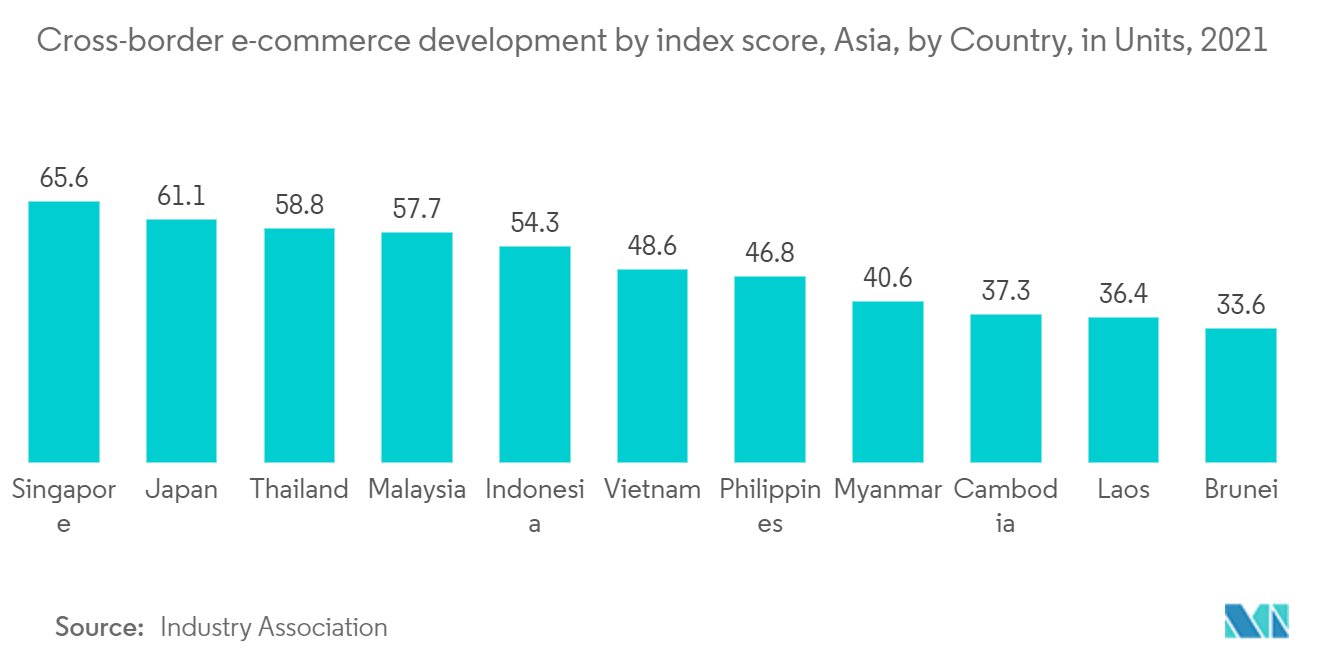Market Trends of Southeast Asia Cross-border E-commerce Industry
This section covers the major market trends shaping the Southeast Asia Cross-border E-commerce Market according to our research experts:
Growth in E-commerce sector in the region driving the market
Southeast Asia's growth stands out even more because most other geographies will only see modest increases this year. The region's 20.6% expansion in 2022 will be the world's highest. In 2022, Latin America will be the only other region to surpass the 20% mark. Only four countries in the world will grow faster than Southeast Asia as a whole, and two of them are in the region: the Philippines and Indonesia. The Philippines, Indonesia, Vietnam, Malaysia, and Thailand will be among the top ten markets in terms of retail e-commerce sales growth.
People adore having options. When compared to Western consumers, Southeast Asian consumers prefer to see the same product listed by multiple sellers so that they can compare prices or delivery times. This is similar to their offline behaviors, where you might see a street of lamp stores or a street of butchers. That is uncommon in Western retail. People are also extremely price sensitive because their income is generally low. Playful interfaces are also appealing to consumers in the region, so gamification, vibrant colours, pop-ups, and blinking features can be found at retailers such as Shopee. Nowadays, the average consumer has more free time, so they prefer to be entertained while shopping as well.
Thailand's 18% increase in retail e-commerce sales in 2022 places it among the top ten countries expected to see the greatest increase in retail e-commerce sales growth. Several factors are driving this growth, increased internet usage, improved logistics and e-payment systems, and government policies. Thailand has one of the highest internet penetration rates in the world, at 79.5%. The country's internet user base was around 54 million in 2020, and it is expected to reach 60 million by 2026. Thailand 4.0, the Thai government's policy, included a budget for the construction of a broadband network across the country's villages.

Growth in social commerce in the region propelling the market growth
Social commerce enables brands to interact with their audiences on their preferred social media platforms throughout the entire shopping journey, from product discovery to the check-out process. It keeps people where they want to be by allowing social media users to shop while interacting with friends, reading news, and watching videos in one place. While e-commerce marketplaces remain the preferred online shopping channel among consumers in Southeast Asia, social commerce accounted for 21% of online purchases. In 2021. It saw a 102% increase in orders, a 91% increase in Gross Merchandise Value, and an 88% increase in average revenue per order in the last year alone.
The rapid growth of social commerce is due to three major factors, the first of which is the increasing use of social media in Southeast Asia. Prolonged restrictions imposed in the region to combat the spread of Covid-19 have resulted in consumers spending more time at home and turning to social media to stay connected, informed, and entertained. Another important factor is the growing demand for one-stop-shop platforms. Consumers are looking for platforms that allow them to discover and buy products. Consumers are increasingly interested in a smooth transition from discovery to purchase. Finally, online shoppers want platforms that allow them to communicate with sellers. Social commerce allows for direct communication with brands, which fosters trust and enables sellers to provide better customer service and customers to purchase more products.


